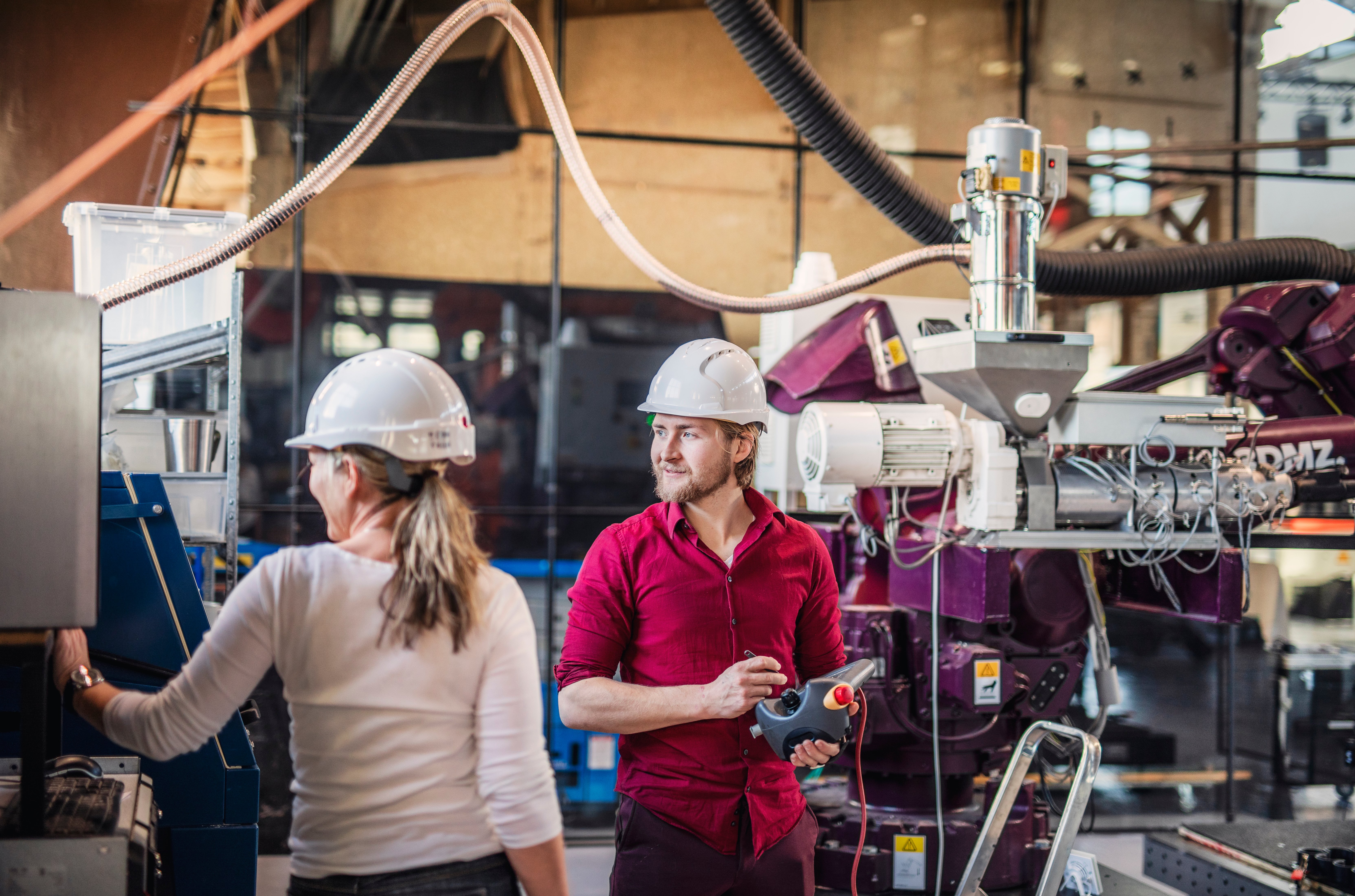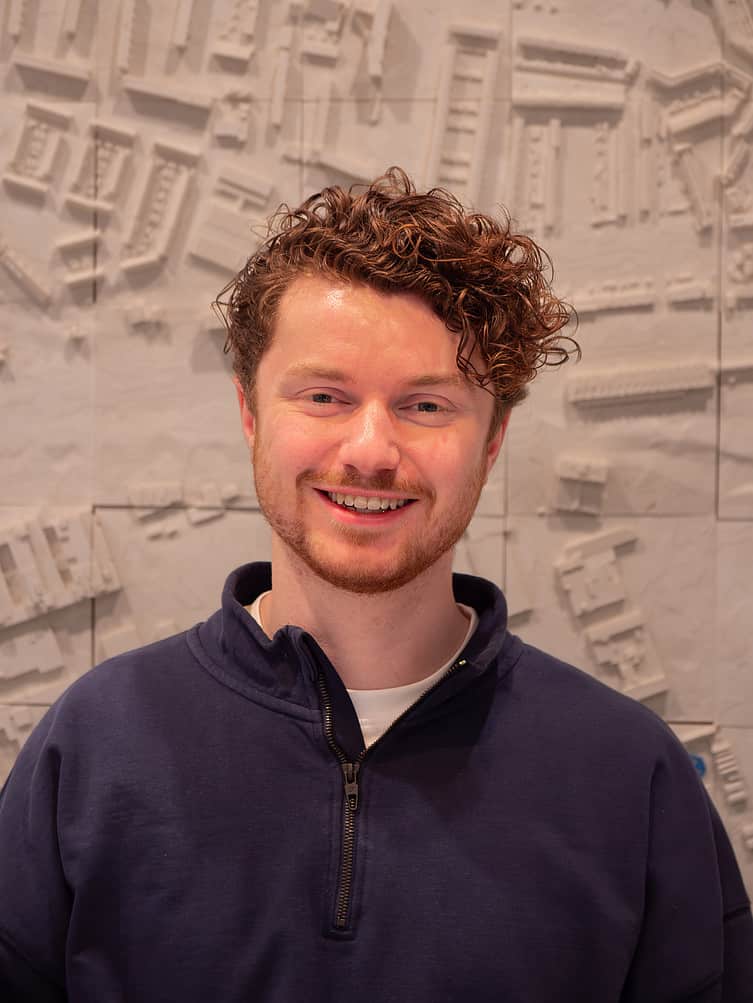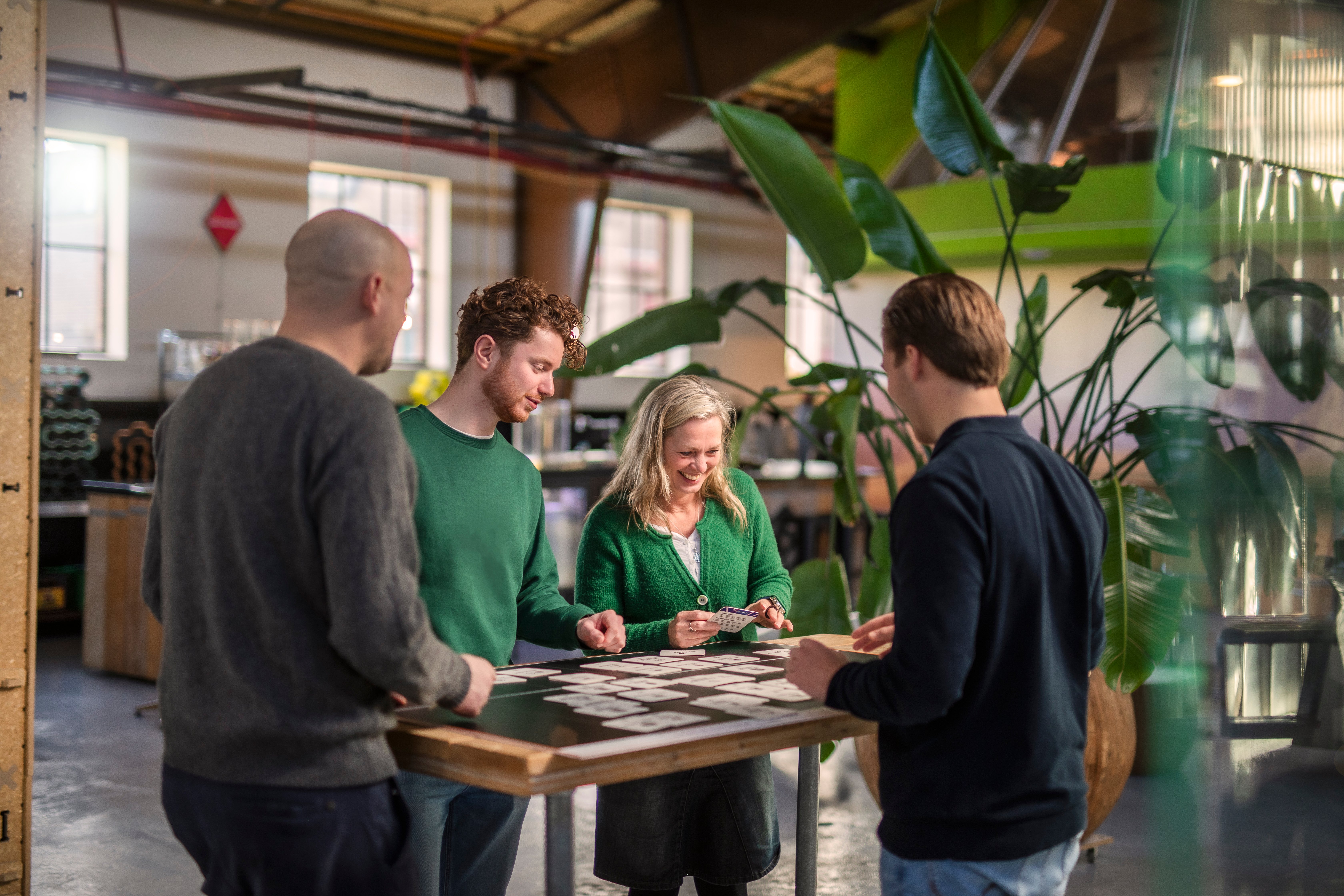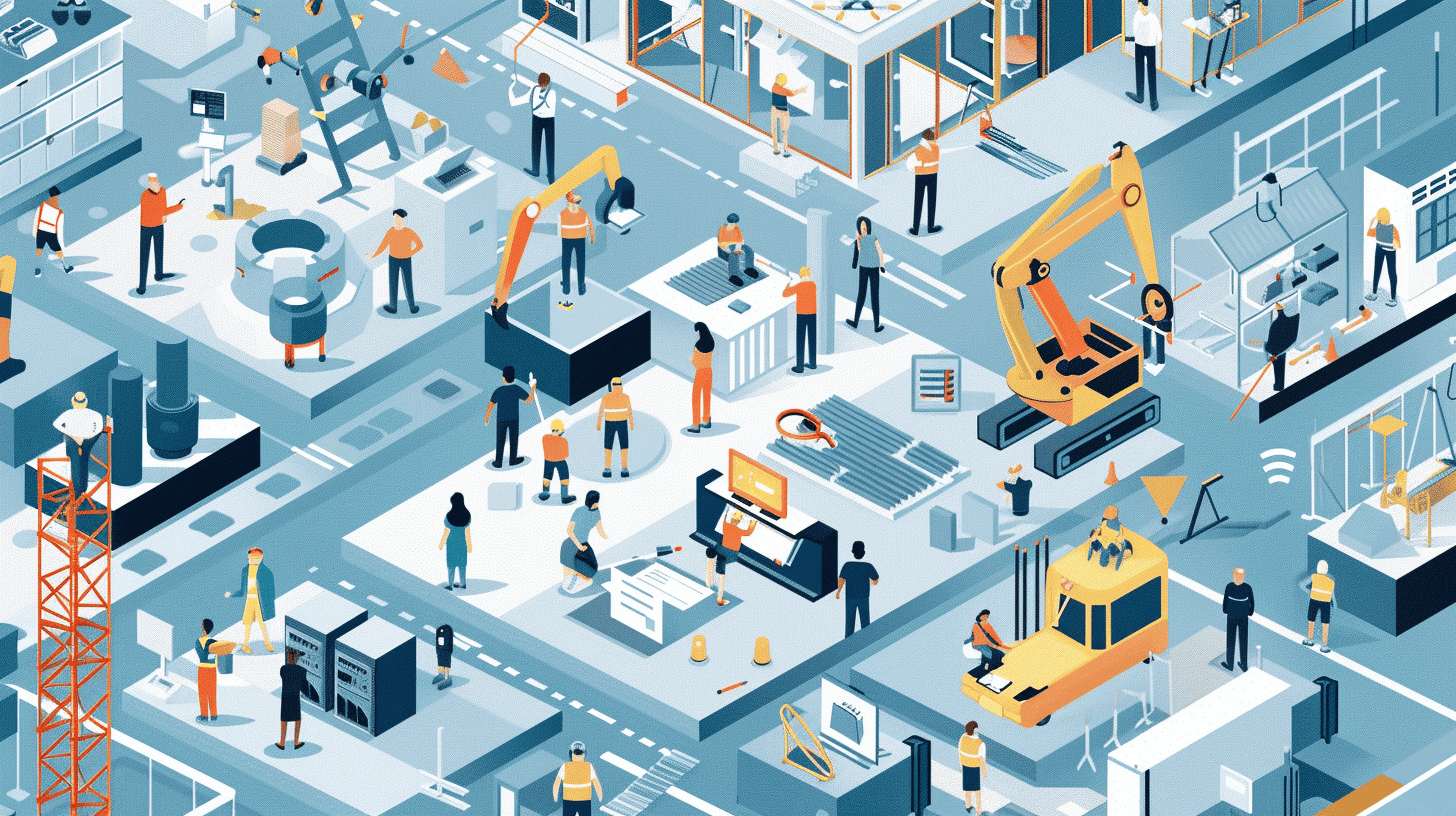
In an old warehouse on an industrial estate just outside the center of Haarlem is the BouwLab R&Do – also called Hub West. Those who visit the lab step into a fast-forward to the construction chain ten years from now. Spin-off Neolithic makes concrete sewer manholes with their 3D printer, for which they received the RIONED Innovation Award 2024 this year. There is a prototype modular bridge, biobased construction with a fungus (mycelium), and a Living Lab behind the shed. This building shows how the chain can reuse existing buildings; most of it consists of remnants of a building in Almere. It has a digital twin (with a building passport), and sensors are incorporated into the building that monitors the status of the material.
Regionaal Bouwen aan Human Capital
Construction is innovating to achieve a clean, circular, and future-proof living environment. With the emergence of new technologies such as artificial intelligence, 3D printing, and sustainable concrete, the construction industry is in transition. For these innovations to land successfully in practice, professionals need new skills. With the Regionaal Bouwen aan Human Capital program, TKI Bouw en Techniek, the Top Consortium for Knowledge and Innovation, aims to accelerate the development of these skills among both current and future professionals. An important part of this is the development of a scalable regional approach around Human Capital. After a duration of over a year, the program in its current form is coming to an end. In this series, we take stock and ask the parties involved, including four regional Hubs (North, East, South, and West), about the main results.
‘All new technology comes together in construction’
Construction still has a long way to go regarding digitization and sustainability – the sector accounts for forty percent of total CO₂ emissions in the Netherlands. Herman van Bolhuis, co-founder of BouwLab R&Do, sees opportunities above all. “Although the construction industry is often seen as non-innovative, all the key technologies, such as digitization, robotization, and new materials, are being applied here. Our industry is one of the most interesting sectors in the Netherlands regarding new technologies. Implementing those technologies also means that the sector must embrace lifelong learning.”
Van Bolhuis explains that the challenge lies in organizing innovation within the complex structure of the construction industry. “The sector consists of several large parties – think VolkerWessels, BAM, or Boskalis. Below that are some 60,000 medium-sized companies, often family businesses. At the bottom of the pyramid are about 250,000 self-employed and two-person companies. The big parties innovate; the layer below wants to innovate but has no money, and innovation is not a priority for the bottom layer. This structure means that the construction industry has little innovativeness. So, how do you organize innovation in this pyramid?”


That’s where the four regional hubs come in. Van Bolhuis: “Forty to fifty companies visit here a week. Many entrepreneurs are quite willing to change, but they think that implementing new technologies is difficult or very expensive. We want to show here that much more can be done than the industry thinks.”
From a modular bridge to a 3D printer for infra to a digital building street, the large hall that houses the BouwLab is full of examples and test setups. “This is how we want to make innovations tangible and visible to entrepreneurs and show that innovation is also within reach for smaller companies. This way, we can introduce informal learning to new target groups (35+), which is crucial for our economy,” said Nils Hospes, project supporter at the knowledge center.
Region West: lots of work, but working together is not automatic
Van Bolhuis notes that other regions in the Netherlands often cooperate much better. “The big advantage of the West is that there is a lot of work here; it has always been that way. Cooperation is not in the DNA here because it has never been necessary. But a future-proof construction industry does require it. You can want to do everything independently, but that’s slow, and you don’t have all the knowledge in-house.”
So last year, low-threshold events, knowledge sessions, and innovative workshops were organized in Haarlem so that the sector could get to know each other and digitalize. This started by putting entrepreneurs representing different parts of the chain—architects, construction companies, and waste management—at the same table. However, knowledge and educational institutions and governments also joined in. Some 200 parties have since joined the hub, and the Regional Building Human Capital program has contributed to a stronger and more active ecosystem in the region.
The hub also sought contact with universities, colleges, and Mbo’s in the region. The cadence of a school year often does not fit a company’s innovation trajectory, says Hospes. “At two times students go on internships: in September, or February. Often things have to be planned a year in advance. That’s not how the construction industry works. We want to improve that fit.”


Innovation Dynamics
That’s how BouwLab developed Innovation Dynamics. The idea? Each group or person gets a set of cards, with, for example, a digital technology (drones) on the front and a description of the technology on the back. Then, the group plots the ticket in a grid with impact low or high and effort low or high. In this way, it becomes clear how everyone looks at the technology in question. Hospes: “Some say, ‘Drones are the future,’ while others think it will be long before they are part of the practice. Discussions quickly emerge by having people within the same company lay out these cards.”
Robots are another example. The Building Lab has a collaborative robot (cobot) that can help install window frames, which now always requires two artisans. But, people have to learn to handle that robot, Van Bolhuis said. “For innovations in construction, it’s crucial that people have lifelong learning. That’s why this program focuses on the human side of construction. Now, when we are young, we get one piece of paper, and that’s it. It should become normal for a welder to get additional training even at age 35. In the construction of the future, we need people with different skills. We are moving toward a highly digitized chain with a large role for technology. About these things, we want people to think here.”
‘This is just the beginning’
The Regionaal Bouwen aan Human Capital program will soon be completed. Still, the four hubs are at the beginning of a five-year “Future-proof Living Environment” program funded by the National Growth Fund. Where does construction in Region West stand after those five years? “Then the chain will be working together much more intensively,” Hospes believes. “Lifelong development will then be much more strongly stimulated. We do that by experimenting, inspiring, and trying. Learning by doing. Leading by learning.“


